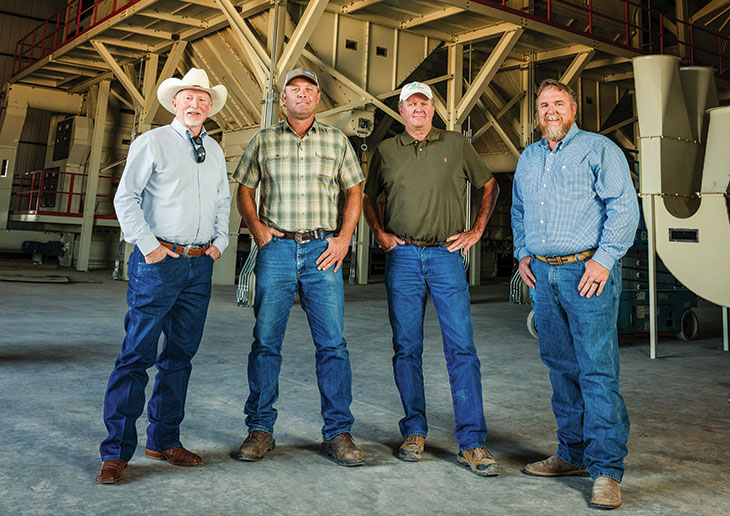
Photo by Shannon Richardson
Pictured inside the new gin are, from left, Randy Boman, Windstar Gins agronomist; and Lonestar Gin leaders Lance Williams, vice president; Mike Friemel, board president; and Carey McKinney, gin manager.
Move over, corn.
In the past two years, cotton has surpassed corn as a mainstay crop across the Texas Panhandle’s northern plains. As water supplies dwindle and irrigation costs rise, more and more farmers are rotating from water-thirsty corn to shorter-season cotton varieties.
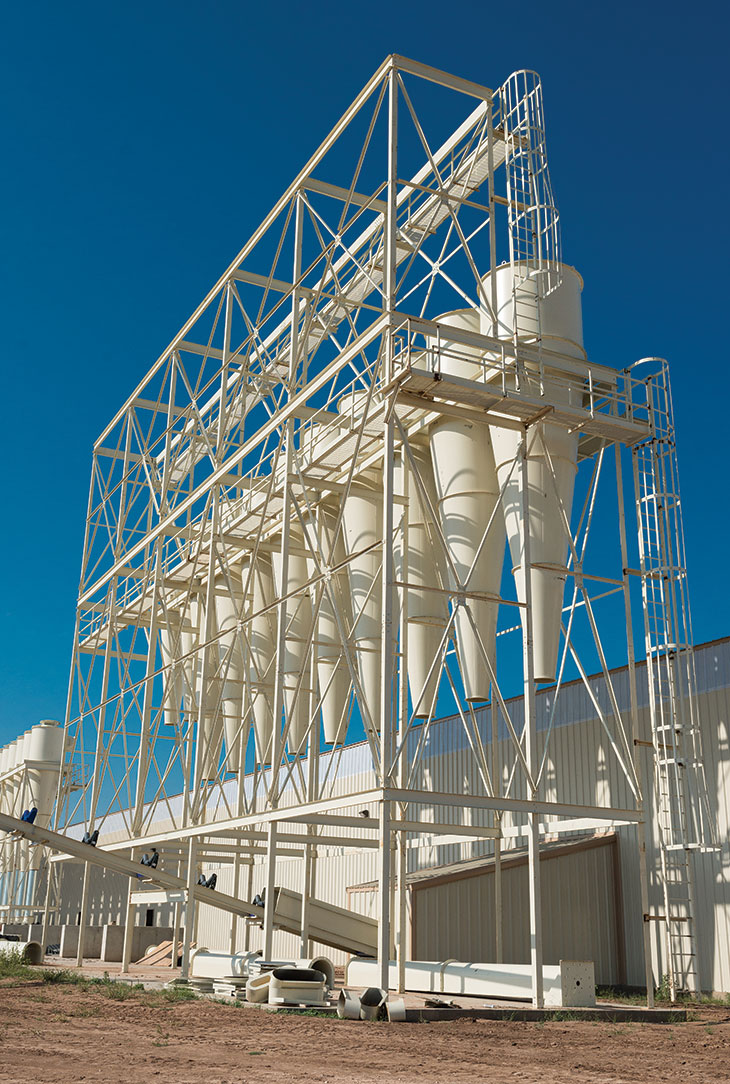
Photo by Shannon Richardson
High-efficiency cyclones collect dust particles during the ginning process.
Cotton’s migration northward is expected to continue. The trend recently led growers and investors to build a new gin south of Pampa in Gray County.
Lonestar Gin — a $24 million facility financed by Plains Land Bank — opened in October. It is designed to process 150,000 bales annually.
“We’ve needed more ginning facilities in this area to handle cotton’s growth,” says Mike Friemel, Lonestar’s board president, who farms cotton in three Panhandle counties. “This new gin will focus on getting cotton ginned in a timely manner.”
120 Bales an Hour
Lonestar’s six gin stands and two presses can turn out 120 cotton bales an hour. The 5-acre gin complex includes a 450-by-195-foot plant, an office building and two seed warehouses. Each warehouse can store up to 6,000 tons of cotton seed. The yard can store 80,000 bales.
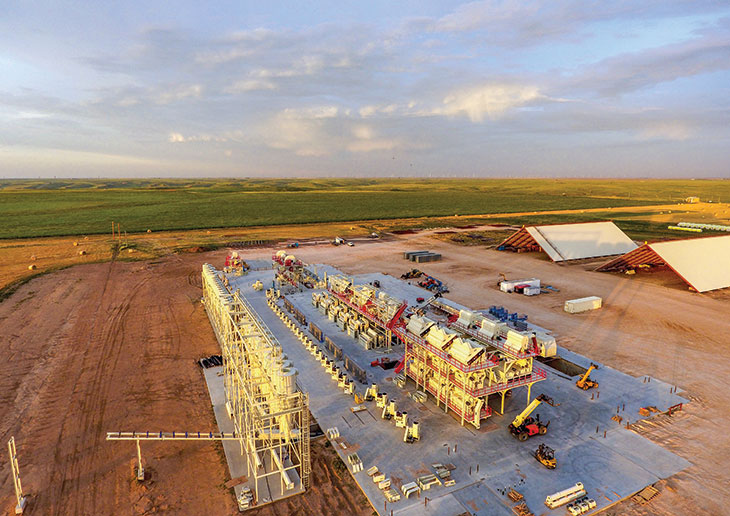
Photo by Terry O’Neal
The Lonestar Gin plant is seen during construction in spring 2019. Behind the plant are two seed houses.
That’s a lot of ginning and storage capacity. But it was urgently needed, say growers.
Panhandle farmer Lance Williams harvested a bumper crop of cotton three years ago. So did other area producers.
“I sent my cotton to five gins,” says Williams, who’s a Plains Land Bank customer and Lonestar Gin vice president. “They were overwhelmed. My cotton was finally ginned by March.”
80 Investors Sign Up
Meanwhile, Williams talked to potential investors about building a small gin. Then in the summer of 2017, he and Friemel met with other cotton producers. Nearly everyone agreed to build a high-capacity gin in Gray or Carson county.

Photo by Shannon Richardson
Two large open-air seed houses store the cottonseed that’s extracted during the ginning process. Seed generally accounts for 15 to 25% of a cotton crop’s value.
Moving forward, Friemel, Williams and Randy Darnell, a Plains Land Bank director who farms in the Panhandle, sat down with directors of Windstar Gins. The huge ginning company owns or is affiliated with several Panhandle gins.
By May 2018, the project had signed on 80 investors with enough equity to build a six-stand gin. Twenty investors are Plains Land Bank customers.
More meetings led to a partnership with an energy provider. That connection led to a prime location near an energy substation. The 640-acre property even came with water rights. The owner, the City of Pampa, agreed to a five-year lease-purchase agreement.
Land Bank Finances Construction
In July 2018, Lonestar backers met with Plains Land Bank loan officers. Both parties agreed to a term loan for the gin’s construction.
“We were familiar with many of their investors,” says Blain Eubank, vice president and Pampa branch manager. “Because Windstar was a significant investor, that gave us confidence in the project.”
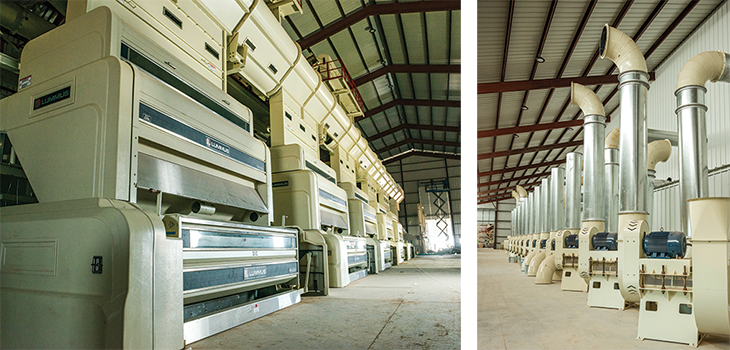
Photos by Shannon Richardson
Left: Six gin stands remove the cotton seed from the lint. Right: Exhaust fans line an interior wall.
This past spring, severe storms in the Texas Panhandle took out many cotton fields.
“We’re only expecting to gin about 50,000 bales this first year,” says Carey McKinney, Lonestar’s gin manager. “But in the near future, we hope to gin as much as 200,000 bales.”
Friemel, who lost his entire cotton crop, will plant even more next season. “If you’re not an optimist, you shouldn’t be a farmer,” he says. “The way I look at it, next year will be a great one, especially for cotton.”
– Sheryl Smith-Rodgers
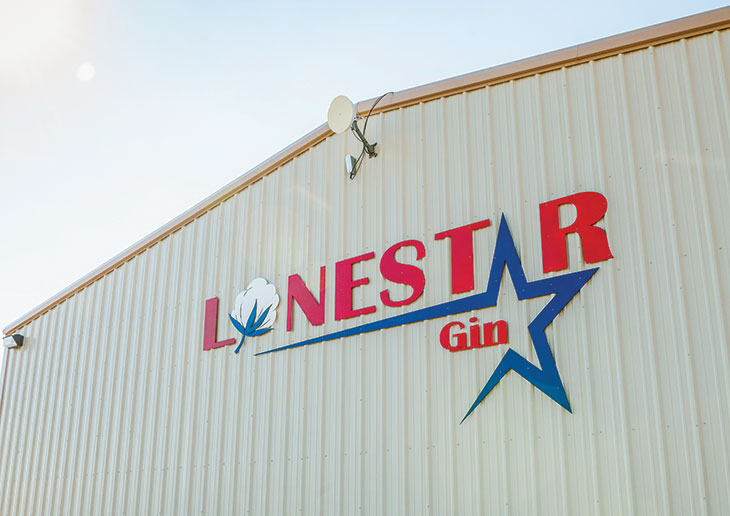
Photo by Shannon Richardson
From Corn to Cotton
In 2016, farmers on the Texas northern high plains planted 1,079,000 acres of corn and 847,500 acres of cotton, according to the USDA.
In 2019, the numbers reversed: 970,000 acres of corn and 1,280,000 acres of cotton.
The reasons are many. Corn requires more water than cotton, and irrigation costs keep rising.
Meanwhile, cotton breeders have developed new shorter-season cotton varieties for colder climates.
That’s not all.
“New cotton varieties have been bred that tolerate auxin herbicides used in growing corn, wheat and other grass crops,” says Dr. Randy Boman, retired Extension cotton specialist, and now Windstar Gins’ agronomics manager.
Machinery also is more efficient now, which means fewer workers are needed, he explains.
“That’s important because labor is an issue for many farmers,” says Boman.
– Sheryl Smith-Rodgers